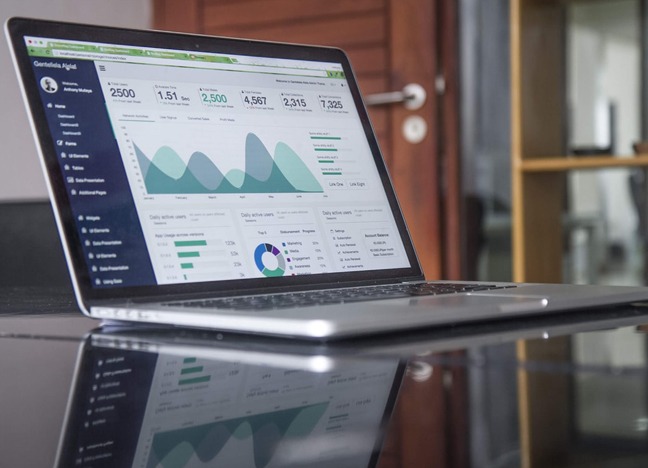See the very interesting and timely article below from leading analytics data provider to the insurance industry, Cytora. Arguably, there is room for improvement when it comes to the ability to accurately price a risk. Why external data is not used more often is surprising and, based on the below, a tactic that insurers will hopefully leverage more in the very near future.
—————————
Back to the future
Twenty years ago around 75% of the value of S&P 500 companies were comprised of physical assets, with around 25% in intangibles, such as intellectual property and brand value. Fast forward to today, and that split has more than reversed[i]. Corporates operating in today’s world are increasingly concerned about new and more esoteric risks than they were in the past.
Yet insurance companies – which traditionally focus on historical claims data to price and assess commercial risks – have struggled to meet the demand for a new generation of risk products, including cyber, reputation and non-damage business interruption.
The key barrier to offering meaningful limits and affordable pricing for products such as cyber is a lack of historical data. However, insurers are increasingly recognising that the past is no longer necessarily an accurate proxy for future claims experience. And more importantly, that external data can be used to understand, price and manage both traditional and emerging risks.
Slow to innovate
But is the change happening quickly enough? According to research conducted by the Association of Risk and Insurance Managers (Airmic)[ii]with AXA Corporate Solutions, Chubb and JLT Specialty ahead of the association’s annual conference, the traditional insurance model is not fit for emerging risks.
It found that disruptive innovation driven by technological advances, globalisation and evolving corporate demands are threatening conventional insurance models. Traditional insurance products – which are underwritten using past claims data as a proxy for future claims experience – remain too geared towards protecting physical assets.
With a dearth of coverages tailored to intangible risks available in the commercial insurance market, organisations are forced to self-insure, putting such risks through their captive insurers or simply keeping them on balance sheet. The Airmic survey revealed that the vast majority of risk managers plan to manage their emerging risks in-house either by reducing or retaining them.
“The insurance industry recognises that traditional insurance is losing relevance in face of today’s more complex and harder-to-define risks,” said Julia Graham, Airmic’s deputy CEO and technical director. “And yet our members want support in understanding and dealing with these modern risks – both in terms of innovative products, but also in terms of broader support.”
It is clear that a seismic shift in approach to underwriting is required. It is an approach that consigns the over-reliance on claims data to the dustbin of history and seeks to leverage readily available, external data to provide more relevant and accurately-priced products.
Such an approach has so far gained most traction within personal lines. In retail motor for instance, the rise of aggregator websites and access to external rating factors from telematics devices and industry fraud and DVLA databases, allows carriers and brokers to offer their customers differentiated pricing, in real-time, without the need for excessive form filling.
A new underwriting approach
Commercial insurers are beginning to catch up, albeit slowly. Certainly, the appetite is there. According to 93% of insurance CEOs surveyed by PwC in 2015[iii], data mining and analysis is the most strategically important digital technology for their business.
There is recognition that external data can enable underwriters to improve risk assessments and forecast potential losses, without the need for actuarial analysis based on historical claims performance or the need for excessive client input.
Instead, external data readily available on company websites, social media, publicly-available government reports and via news articles are among a range of sources with which insurance companies can isolate and utilise risk information for underwriting purposes.
For instance, close to 100% of all product recalls and contamination incidents are reported online, offering a valuable tool for product liability underwriters. Moreover, with an expanded pool of rating factors policies should become more dynamic, for instance, reflecting changes in risk that happen on a seasonal basis.
Such a shift in approach to risk selection and pricing is necessary in a rapidly-changing commercial risk landscape. “There is now data to assess risks that were previously uninsurable,” said Gregg Holtmeier, executive vice president at JLT Re. “Another benefit is that a more granular and scientific evaluation should ultimately lead to lower premiums.”
——————————
On a separate but related note, if you happen to be in Naples this week for Florida RIMS be sure and catch Libertate Insurance CEO, Paul Hughes, speak about the impact of data and insurance. He loves to talk data! Paul takes the stage at 1:30p and will be entertaining, if nothing else! No pressure Paul.
References:
[i] http://www.businessintangibles.com/single-post/2015/03/11/Intangible-Assets-Increase-to-84-of-the-SP-500s-Value-in-2015-Report
[ii] https://www.airmic.com/news/press/research-shows-traditional-insurance-model-not-fit-emerging-risks
[iii] https://www.pwc.com/gx/en/ceo-survey/2015/industry/assets/ceo-survey-2015-indepth-analysis-banking-and-capital-markets.pdf
[iv] https://www.jltspecialty.com/our-insights/publications/whiteboard/whiteboard-spring-2017/harnessing-data-and-analytics-in-insurance
Join the Conversation on Linkedin | About PEO Compass
The PEO Compass is a friendly convergence of professionals and friends in the PEO industry sharing insights, ideas and intelligence to make us all better.
All writers specialize in Professional Employer Organization (PEO) business services such as Workers Compensation, Mergers & Acquisitions, Data Management, Employment Practices Liability (EPLI), Cyber Liability Insurance, Health Insurance, Occupational Accident Insurance, Business Insurance, Client Company, Casualty Insurance, Disability Insurance and more.
To contact a PEO expert, please visit Libertate Insurance Services, LLC and RiskMD.
